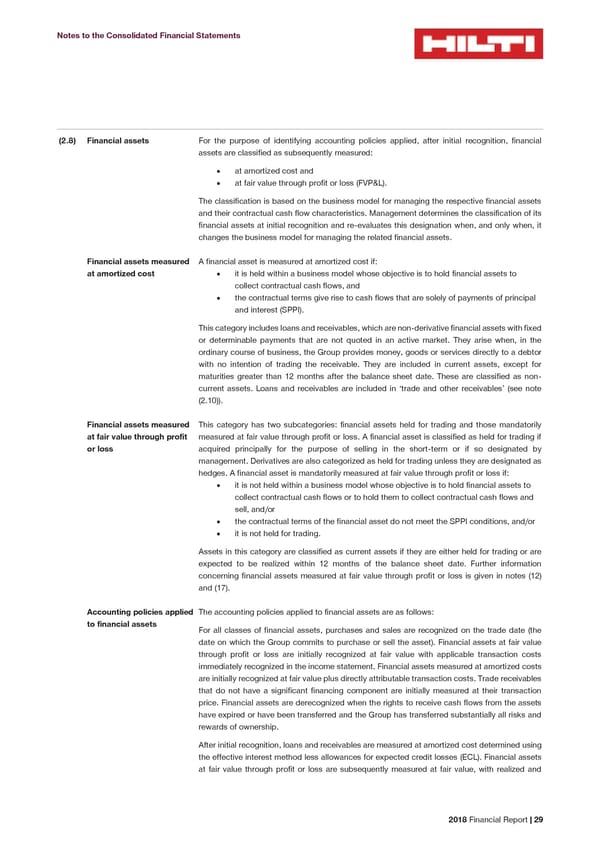Notes to the Consolidated Financial Statements Financial assets For the purpose of identifying accounting policies applied, after initial recognition, financial (2.8) assets are classified as subsequently measured: • at amortized cost and • at fair value through profit or loss (FVP&L). The classification is based on the business model for managing the respective financial assets and their contractual cash flow characteristics. Management determines the classification of its financial assets at initial recognition and re-evaluates this designation when, and only when, it changes the business model for managing the related financial assets. Financial assets measured A financial asset is measured at amortized cost if: at amortized cost • it is held within a business model whose objective is to hold financial assets to collect contractual cash flows, and • the contractual terms give rise to cash flows that are solely of payments of principal and interest (SPPI). This category includes loans and receivables, which are non-derivative financial assets with fixed or determinable payments that are not quoted in an active market. They arise when, in the ordinary course of business, the Group provides money, goods or services directly to a debtor with no intention of trading the receivable. They are included in current assets, except for maturities greater than 12 months after the balance sheet date. These are classified as non- current assets. Loans and receivables are included in ‘trade and other receivables’ (see note (2.10)). Financial assets measured This category has two subcategories: financial assets held for trading and those mandatorily at fair value through profit measured at fair value through profit or loss. A financial asset is classified as held for trading if or loss acquired principally for the purpose of selling in the short-term or if so designated by management. Derivatives are also categorized as held for trading unless they are designated as hedges. A financial asset is mandatorily measured at fair value through profit or loss if: • it is not held within a business model whose objective is to hold financial assets to collect contractual cash flows or to hold them to collect contractual cash flows and sell, and/or • the contractual terms of the financial asset do not meet the SPPI conditions, and/or • it is not held for trading. egory are classified as current assets if they are either held for trading or are Assets in this cat expected to be realized within 12 months of the balance sheet date. Further information concerning financial assets measured at fair value through profit or loss is given in notes (12) and (17). Accounting policies applied The accounting policies applied to financial assets are as follows: to financial assets For all classes of financial assets, purchases and sales are recognized on the trade date (the date on which the Group commits to purchase or sell the asset). Financial assets at fair value through profit or loss are initially recognized at fair value with applicable transaction costs immediately recognized in the income statement. Financial assets measured at amortized costs are initially recognized at fair value plus directly attributable transaction costs. Trade receivables that do not have a significant financing component are initially measured at their transaction price. Financial assets are derecognized when the rights to receive cash flows from the assets have expired or have been transferred and the Group has transferred substantially all risks and rewards of ownership. using After initial recognition, loans and receivables are measured at amortized cost determined the effective interest method less allowances for expected credit losses (ECL). Financial assets at fair value through profit or loss are subsequently measured at fair value, with realized and 2018 Financial Report | 29
 2018 Financial Report Page 30 Page 32
2018 Financial Report Page 30 Page 32